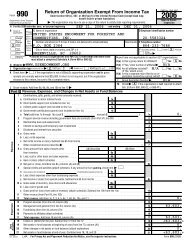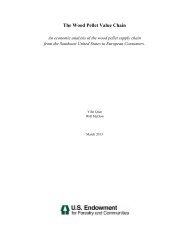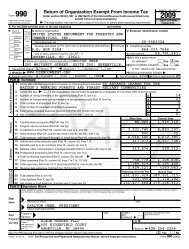The State and Future of U.S. Forestry and the Forest Industry (May ...
The State and Future of U.S. Forestry and the Forest Industry (May ...
The State and Future of U.S. Forestry and the Forest Industry (May ...
You also want an ePaper? Increase the reach of your titles
YUMPU automatically turns print PDFs into web optimized ePapers that Google loves.
20 Environmental Design) green building rating program developed by <strong>the</strong> U.S. Green Building Council were projectsoutside <strong>the</strong> U.S., in more than 30 countries. 24 LEED has certified more than 9,000 commercial buildings in its newconstruction st<strong>and</strong>ard alone.In addition to green building rating systems, <strong>the</strong>re are a variety <strong>of</strong> efforts to incorporate green building conceptsinto building codes. <strong>The</strong> International Code Council (ICC) has developed <strong>the</strong> International Green ConstructionCode (IGCC). St<strong>and</strong>ards developed by <strong>the</strong> ICC tend to make <strong>the</strong>ir way into local building codes.In many ways, private-sector efforts at green building certification are quasi-regulatory programs that <strong>of</strong>ten lacktransparent accountability. For many <strong>of</strong> <strong>the</strong>se efforts, no organization monitors <strong>the</strong>m or facilitates sector-wideengagement in various processes, <strong>and</strong> because <strong>of</strong> anti-trust issues many in <strong>the</strong> forest sector cannot truly work withcustomers on solutions.Currently, local, state, <strong>and</strong> government agencies are using <strong>the</strong> most widely acclaimed system, which essentiallydiscriminates against forest products.Next Generation Farm Bill: <strong>The</strong> U.S. “Farm Bill” is <strong>the</strong> primary agricultural policy tool <strong>of</strong> <strong>the</strong> federal government.Typically passed every five years, it has various programs that impact <strong>the</strong> forest sector. <strong>The</strong>se programs aredelivered through <strong>the</strong> forestry, conservation, <strong>and</strong> several o<strong>the</strong>r titles in <strong>the</strong> Act <strong>and</strong> have traditionally been a smallportion <strong>of</strong> <strong>the</strong> funding provided in <strong>the</strong> entire bill. 25According to <strong>the</strong> USDA, family farms account for almost 96 percent <strong>of</strong> <strong>the</strong> 2,204,792 farms in <strong>the</strong> U.S. 26 <strong>The</strong>reare more than 11 million family forest l<strong>and</strong>owners. Yet Farm Bill funding, including <strong>the</strong> conservation titles, largelygoes to farms. Securing additional funding for family forest l<strong>and</strong>owners is a priority.O<strong>the</strong>r issues include ensuring that: 1) incentives do not create unintended consequences; 2) forests remain asforests whenever possible; <strong>and</strong> 3) l<strong>and</strong>owners not remove trees before <strong>the</strong>y are ready in response to an incentiveprogram.<strong>The</strong> forest sector does not adequately engage <strong>the</strong> Natural Resources Conservation Service (NRCS). <strong>The</strong> NRCSadministers important conservation funding <strong>and</strong>, in many cases, <strong>the</strong> forest sector is not well represented indecision making processes that prioritize conservation funding <strong>and</strong> projects. <strong>State</strong> agencies, in particular, lack <strong>the</strong>resources to properly engage in <strong>the</strong>se programs.Ano<strong>the</strong>r challenge for <strong>the</strong> forest sector is learning how to approach l<strong>and</strong>owners in better <strong>and</strong> more sophisticatedways. L<strong>and</strong>owner outreach has been a top priority for decades, <strong>and</strong> <strong>the</strong> forest sector has made little progress inengaging this important group.Summary—Priority Issues <strong>of</strong> ConcernWhile <strong>the</strong> forestry sector faces numerous policy challenges, as noted above, three issues st<strong>and</strong> out—<strong>the</strong> needfor regulatory reform; green building rating systems that disadvantage wood <strong>and</strong> wood products; <strong>and</strong> fundingchallenges associated with <strong>the</strong> current Farm Bill.Measures <strong>of</strong> Success: General measures <strong>of</strong> success to address <strong>the</strong>se three priority issues correspondingly fall intothree clusters. First is a stable, streamlined regulatory process with fewer regulatory entities involved. Regulationswould yield social benefits exceeding <strong>the</strong> cost <strong>of</strong> <strong>the</strong> implementing <strong>the</strong> regulations. Ano<strong>the</strong>r successful outcomewould be <strong>the</strong> selective substitution, where feasible, <strong>of</strong> private-sector forest certification programs for regulationsthat govern forest management.Second is evidence <strong>of</strong> a social consensus that wood is a preferable, green building material. This recognitionwould lead to forest products being considered in codes or green building systems on a level playing field witho<strong>the</strong>r materials. Specifically, <strong>the</strong> LEED system would better recognize forest products in its rating systems <strong>and</strong>would accept all credible certification systems as added value in <strong>the</strong> rating process. If LEED does not evolve toproperly recognize forest products, <strong>the</strong>n government procurement policies relating to green buildings need to24See http://en.wikipedia.org/wiki/Leadership_in_Energy_<strong>and</strong>_Environmental_Design25See, for example, Ross W. Gorte, “<strong><strong>Forest</strong>ry</strong> in <strong>the</strong> 2008 Farm Bill,” Updated June 23, 2008, Washington, D.C.: Congressional Research Service.26Hoppe R., Korb P., O’Donoghue E., <strong>and</strong> Banker D.E. 2007. Structure <strong>and</strong> Finances <strong>of</strong> U.S. Farms: Family Farm Report, 2007 Edition. Economic Research Service/USDA.Available online at http://www.ers.usda.gov/media/201475/eib24_1_.pdf.





